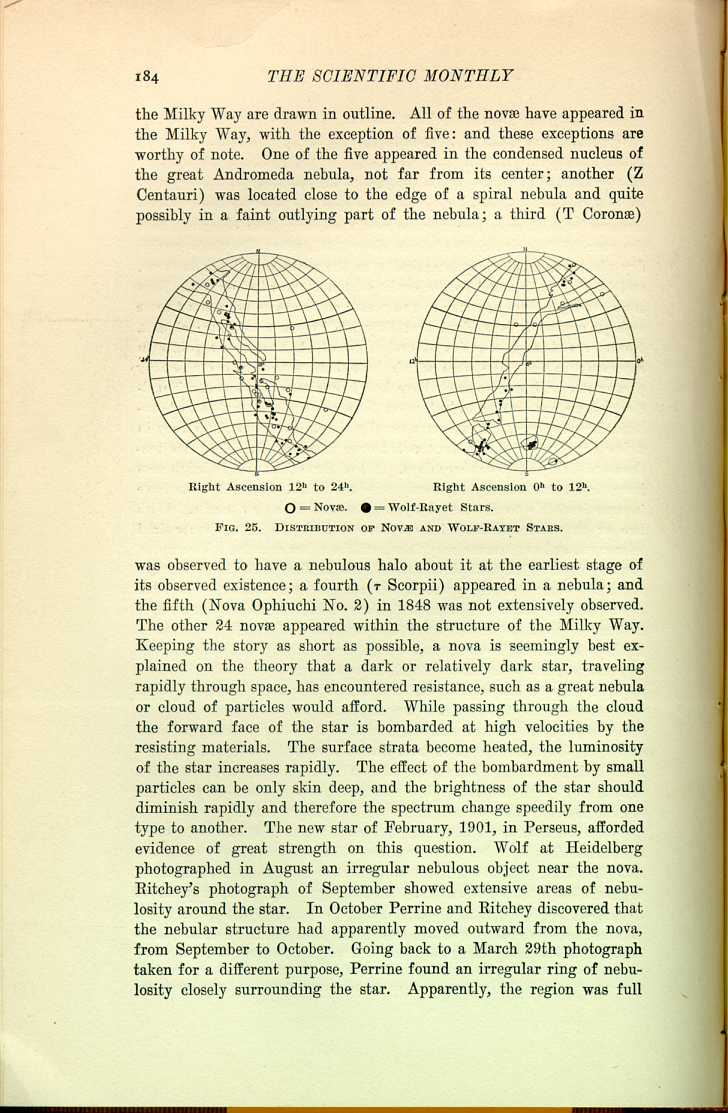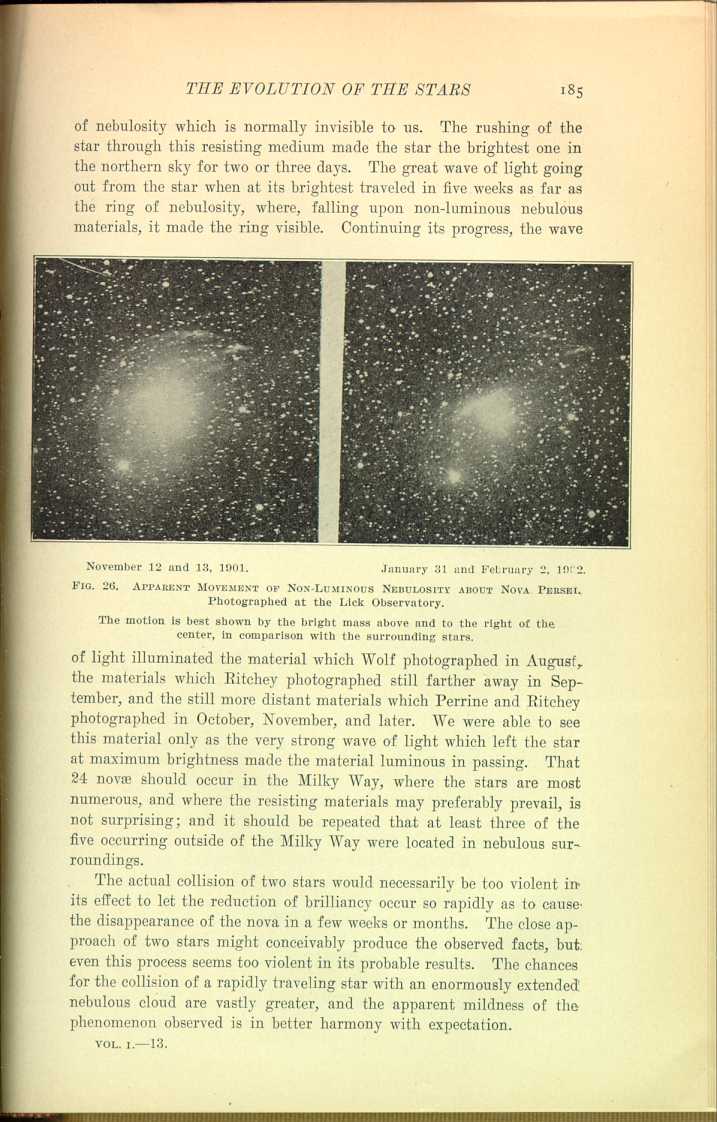| The Scientific Monthly | ||
THE NOVÆ
The so-called new stars, otherwise known as temporary stars or novæ, present interesting considerations. These are stars which suddenly flash out at points where previously no star was known to exist; or, in a few cases, where a faint existing star has in a few days become immensely brighter. Twenty-nine new stars have been observed from the year 1572 to date; 19 of them since 1886, when the photographic dry plate was applied systematically to the mapping of the heavens, and 15 of the 19 stand to the credit of the Harvard observers. This is an average of one new star in two years; and as some novæ must come and go unseen it is evident that they are by no means rare objects. Novæ pass through a series of evolutions which have many points in common; in fact, the ones which have been extensively studied by photometer and spectrograph have had histories with so many identities that we are coming to look upon them as standard products of evolutionary processes. These stars usually rise to maximum brilliancy in a few days: some of the most noted ones increased in brightness ten-thousand-fold in two or three days. All of them fluctuate in brightness irregularly, and usually in short periods of time. Several novæ have become invisible to the naked eye at the end of a few weeks. With two or three exceptions, all have become invisible in moderate-sized telescopes, or have become very faint, within a few months. Two novæ, found very early in their development, had at first dark line spectra, a night later bright lines appeared, and a night or two later the spectra contained the broad radiation and absorption bands characteristic of all recent novæ. After the novæ become fairly faint, the bright lines of the gaseous nebula spectrum are seen for the first time. These lines increase in relative brilliancy until the spectra are essentially the same as those of well-known nebulæ, except that the novæ lines are broad whereas the lines of the nebulæ are narrow. In a few months or years the nebular lines diminish in brightness, and the continuous spectrum develops. Hartmann at Potsdam, and Adams and Pease with the 60-inch Mount Wilson reflector, have shown that the spectra of the faint remnants of four originally brilliant novæ now contain some of the bright lines which are characteristic of Wolf-Rayet stars.[2]
Why the novæ suddenly flare up, and what their relations to other celestial bodies may be, are questions which can not be regarded as settled. Their distribution on the celestial sphere in indicated in Figure 25 by the open circles. In this figure the densest parts of

FIG. 25. DISTRIBUTION OF NOVÆ AND WOLF-RAYET STARS.
[Description: Illustration of two globe-like spatial maps that indicate the distribution of novæ and Wolf-Rayet stars.]
FIG. 26. APPARENT MOVEMENT OF NON-LUMINOUS NEBULOSITY ABOUT NOVA
PERSEI.
Photographed at the Lick Observatory.
The motion is best shown by the bright mass above and to the right of
the center, in comparison with the surrounding stars.
[Description: Two photographs that compare the apparent movement of
non-luminous nebulosity about the Persei nova.]
The actual collision of two stars would necessarily be too violent in its effect to let the reduction of brilliancy occur so rapidly as to cause the disappearance of the nova in a few weeks or months. The close approach of two stars might conceivably produce the observed facts, but even this process seems too violent in its probable results. The chances for the collision of a rapidly traveling star with an enormously extended nebulous cloud are vastly greater, and the apparent mildness of the phenomenon observed is in better harmony with expectation.
| The Scientific Monthly | ||